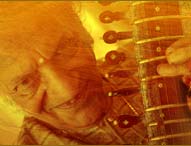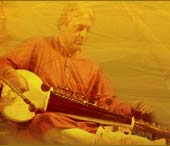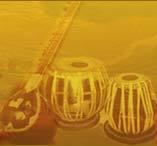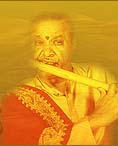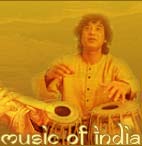Chenda is a cylindrical instrument popular in Kerala and some parts of Karnataka in India. It is a wooden drum, which is cylindrical in shape and has a length of 2 feet and a diameter of 1 foot. It is covered with skin (generally of cow) on both the sides. The drummers hang this musical instrument in their neck or on shoulders. With the help of two sticks called as chendakkol, the drummer beats the Chenda and it produces very loud sound. It is a percussion instrument which is also known as 'Chende' in Karnataka. It is made from the wood of jackfruit tree. Chenda is mainly used in Hindu religious art forms of Kerala.
History of Chenda
Chenda is a musical instrument which has been in use since the ancient times. Its presence was first discovered in Hindu mythologies, paintings and sculptures. In early days, Chenda was used by the men of King to announce some important information and also to declare war. Traditionally, it was categorized as 'Asura Vadyam' which means an instrument which cannot be used in harmony. In Kerala, it was used at the time of festivals, in temples and in other auspicious ceremonies and eventually became an important part of their cultural activities and rituals. This Indian drumming instrument is capable of producing very complex rhythms. The sound emitted by Chenda is loud and rigid and thus, can be heard easily from more than 3 kilometers. This musical instrument is very heavy in weight. Chenda has also been in use in the tantric rituals of goddess Mahakali from the previous time.
Types of Chenda
There are three types of Chendas. One is 'Uruttu Chenda' which is used to play variations in music. It is used to lead the orchestra. The second type is 'Veekku Chenda', the one which is used to beat the basic rhythm, while the third variety is 'Acchan Chenda'.
Occasions
In Kerala, Chenda is mostly used in Hindu religious art forms. Chenda is used as a supplement for Kathakali and Kodiyattam dances and rituals in Kerala. It is also a significant part of the famous folk dance-drama of Tulu Nadu (Karnataka) popularly known as 'Yaksha Gana'. Chenda, in chorus, takes the main stand during the grand festivals of Kerala like Thrissur Pooram. It is also used in traditional classical dances of Kerala such as Kannyar Kali and Theyyam.
Famous Chenda Players
Thrippekkulam Achutha Marar, who has been awarded with Pallaavoor Puraskaram by Government of Kerala, is a popular Chenda player. Another well-known player of the instrument is Aliparamba Sivarama Poduval. In India as well as in abroad, there are many training schools and institutions which give training on how to play Chenda. Apart from this, there are some online training tutorials which provide information on playing Chenda. Chenda has acquired fame across the world. 'Kerala Kalamandalam', the famous institute provides training in all the traditional musical instruments. In 1982, Kerala government started a training school called 'Kshetra Kala Peedum' to pass on this talent to the upcoming generation. This school is situated on the ground of the famous Vaikom Mahadevar Temple. The school offers training in several drumming instruments such as Chenda, Edakka, Thimila, Maddhalam, Tavil etc. Apart from this, school also provides three year courses in holy singing and nadaswaram. In this school admission is restricted to the boys who have completed their high school and are around 15-20 years of age. An aptitude test is conducted by the Kshetra Kala Peedum for the selection of students.
